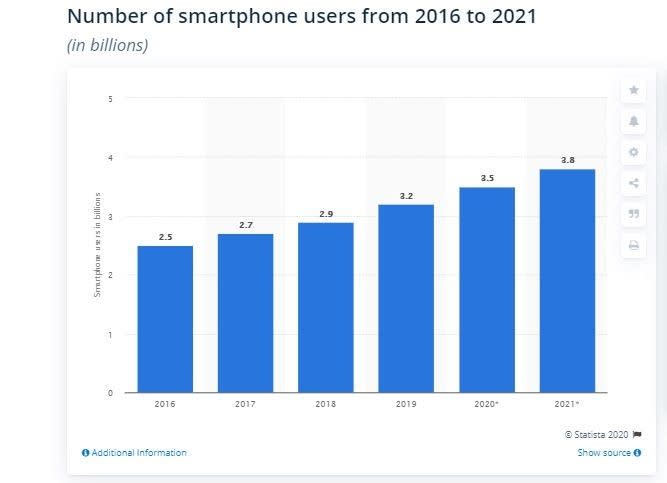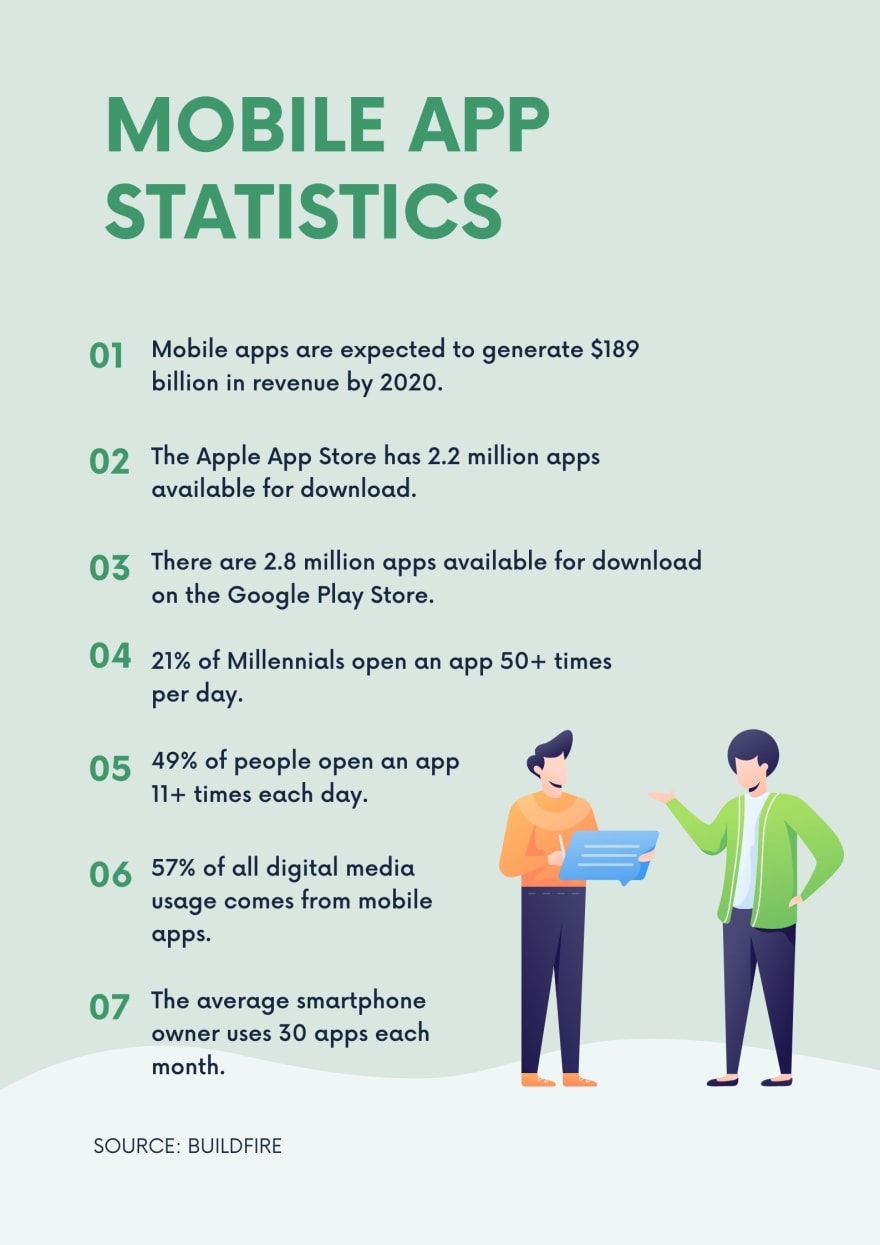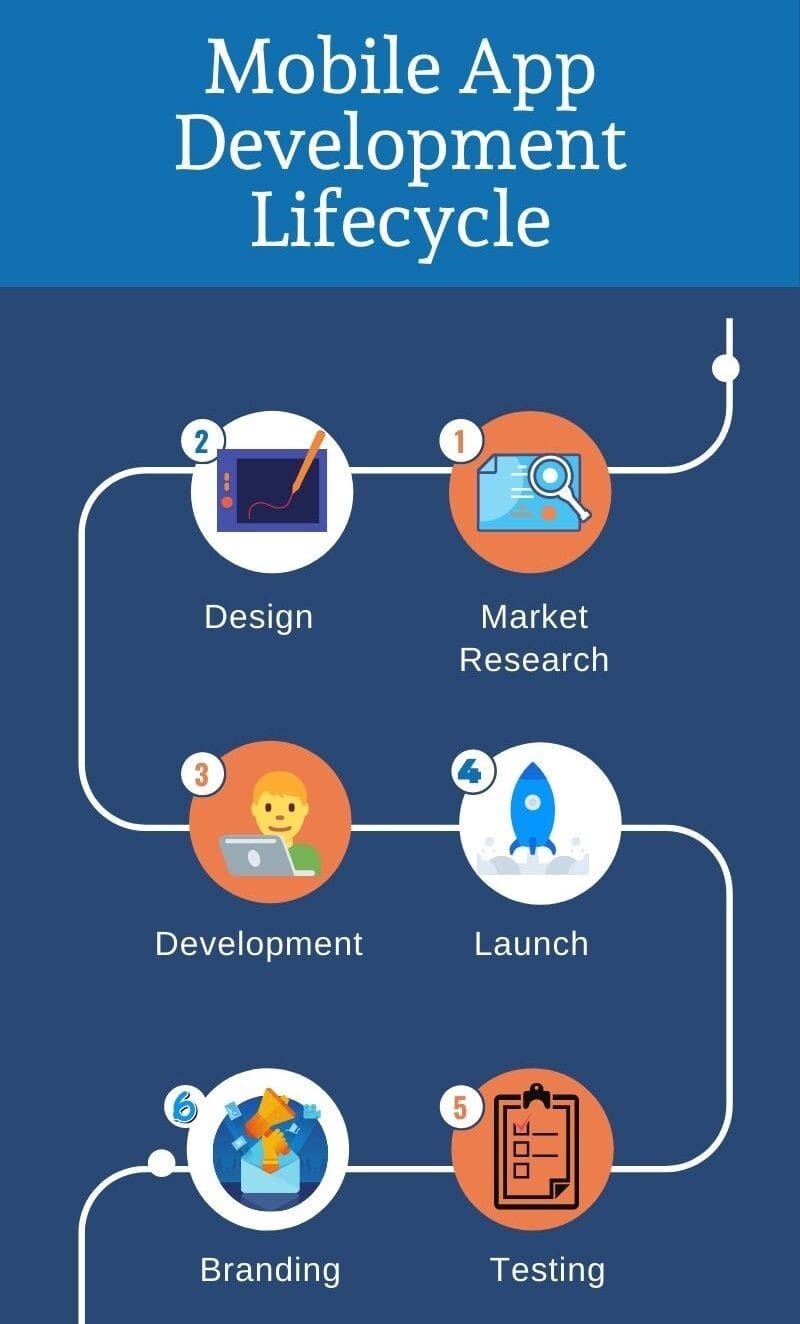The software world is always evolving especially mobile app development. Today, there are approx 2.5 billion mobile users around the globe. And, if we look at the market research report, you will see, the app economy will reach 6.3 trillion by 2021.

As the graph shows, there is a bright future for mobile app development. So, if you’ve thought about building a mobile app for business purposes or personal use. It would be good if you have an understanding of the mobile app development lifecycle. Also, you can choose a mobile app development company listed on SoftwareFirms.
But before jumping to the life cycle, let's cover another question that is buzzing over the Internet.
Is it necessary for businesses to have a mobile app?
Well, if you ask me- it is Yes. These days apps are a necessity for a business. This is because it helps in improving customer engagement as well as facilitates brand-building processes.
Moreover, it opens huge opportunities for businesses to grow and earn maximum revenue. To prove this, let see the mobile app statistics in the figure below.

So, while looking at the mobile application stats, I would advise you, grab this opportunity as early as possible. Because if you don't grab it now, you are keeping yourself much back from the existing market.
But before you start developing an app, let me clear you one thing. Mobile app development is not just one step task. You need to follow some steps to generate the desired benefits.
Today, the experience we are feeling with the app is different from the one we used to have in the past. This is only because some developers follow the mobile app development SDLC.
I know, your mind is triggering with a question…
What is the Mobile App Development SDLC? How is It Helpful?
Mobile app development SDLC is nothing but the process that is evolved while developing an app. This Software Development Life Cycle (SDLC) is similar to a waterfall model. It is derived from studying the various aspects of an app. However, there are countless benefits to it, some are as follow:
● It helps in recalling What's right for your business.
● What platform should you consider?
● At what time will your app develop?
● How will the app look? And much more.
Now, let see what are the mobile application development process steps?
6 Easy Steps: Learn the Mobile App Development Lifecycle
1. Explore Market Research
The first step is easy but at the same time, it's most important. The research phase will help you in discovering new ideas to develop any type of app. Not only the ideas you will get, but there are also other benefits too like recognizing the target audience, what solution you will serve with your app? and a lot more.
Here, in this stage, you will understand:
● What feature do you need to add?
● What will be your target location?
● What feature will differentiate you from others?
● It helps you in selecting the platform- what OS to opt for an app?
● Whether to go for cross-platform, native, or hybrid?
Wooo!!...so much information.
But do you know how to do or what to do in market research?
Well, the answer is simple- go for the competitor research, explore what is on-trend, what features are mostly liked by the audience, etc. Overall, you can Google it to gather all this information while going to develop an app.
2. Design
The design stage decides the look and feels for your app. Here, with a look and feel, I mean your app UI/UX. UI and UX are the two important elements of any app. It helps in determining the success of your app.
What Role Does UI/UX Play in An App?
The UI/UX has a great role to play in the mobile app. UI is a path through which users interact with your app whereas UX provides the experience of using the app. These both are important because when a user opens your app, it is only the design (UI/UX) that can impress them to stay for a longer time.
So, while deciding the design of an app, sketch multiple designs, and ask your colleagues to give feedback. Note down that feedback and do changes in design if required. This is how you can come up with some interesting, unique, and engaging design.
3. Development
This phase of the app development life cycle covers the coding part or you can say the back-end part. This phase gets started after you finalize the app idea. I am saying this because the developer has to develop the prototype to confirm the features and functionalities.
The development stage is split into multiple sections- back-end or server-end, APIs, and the front-end.
In this stage of the cycle, whether you have hired an in-house app developer or outsourcing mobile app development (PixelCrayons), the developer will create an actual screen after writing the codes. This is a screen through which the user will interact with your app. So, make sure your developer has included all those points that we discussed in the above phases.
4. Testing
Testing is important because it gives you the authority to check the quality of your app. It also helps you in deciding which feature is working well or which is showing bugs? That is why- testing is a crucial step in the mobile app development process.
On the other hand, testing shows the defect that your app holds. This shows how you can easily fix those errors in the early stage. The errors are setbacks for your app. This can cause your app not to perform well. Therefore make sure you have a fast speed wireless network router like Netgear router login to communicate effectively with your team members to ensure timely delivery of the product and to avoid miscommunication. Hence, it adds value to your claims and ensures a better experience for the users.
Further, the testing process is distributed in different parts.
● Functionality testing
● Performance testing
● Compatible testing
● Scalability testing
● Usability testing
● Security testing
If you don’t want to lose your potential customer, fix all the technical errors confronted while following the testing step. You can hire a tester to execute this process. Also, make sure your testing team and development team have better coordination at work. Because the testing team will not solve the error, they will only have to inform the development team. It is a developer who can fix all the bugs.
However, there are two ways of testing your app- manual and automation testing. Both of the testing processes are equally important. You should go with both because of the common motive- recognizing the bugs. They are useful in finding all the bugs in your app.
5. Launch/ Deployment
Pick the particular day you want to launch your application in the marketplace. To do such, make a plan, talk with your team, and then deploy your mobile application on the ideal platform. However, launching the application isn't the last step. As you get continuous criticism from your crowd, you need to roll out that criticism and do the improvement accordingly.
That is why we are saying- two other cycles remain related to this stage i.e maintenance and support. Here, maintenance is offering better functionality for your application. Whereas, support help in resolving the queries of your customers’ faces while using the app. Not only that, you can guide users- how to use the app in a better way?
6. Branding/Marketing
The success of a mobile application is wildly dependent on branding. Branding adds value to your app. As there are millions( approx 2.8 million) of apps available to download from the Google Play Store. This means competition is much higher.
So don't ignore the branding of your application to different online platforms. When you brand your app well, Branding not only gives your app visibility but also helps in building strong associations with the users.
Optimize your app and advertise it to the different social media channels. This way your app is reachable to a massive audience. Hence, this will help you in targeting the ideal customer and earn profit in the business.
For this, you can join different groups of your niche and share the app link or even you can create a landing page.
Wrapping Up
If you are willing to build a mobile application, you should know the cycles involved in this entire development process. Here, in this article, we have talked over the six basic stages of mobile app development. These steps guarantee that the result (mobile application) satisfies your desires and fills your business needs.
Additionally, if you are not a technical person but desire to have an app or looking for app development companies in India. Feel free to take help from software development consulting companies like SoftwareFirms. Here, you will get the endless option of the companies in the required categories-whether you are searching for an in-house development team or outsource development team.








Top comments (0)